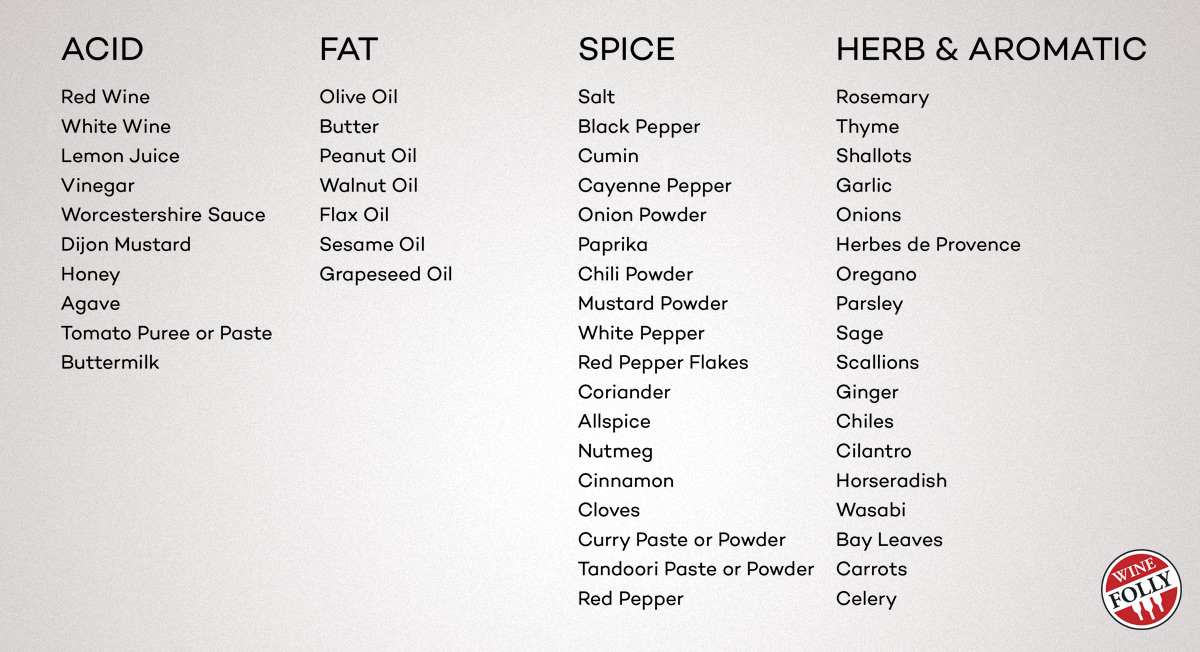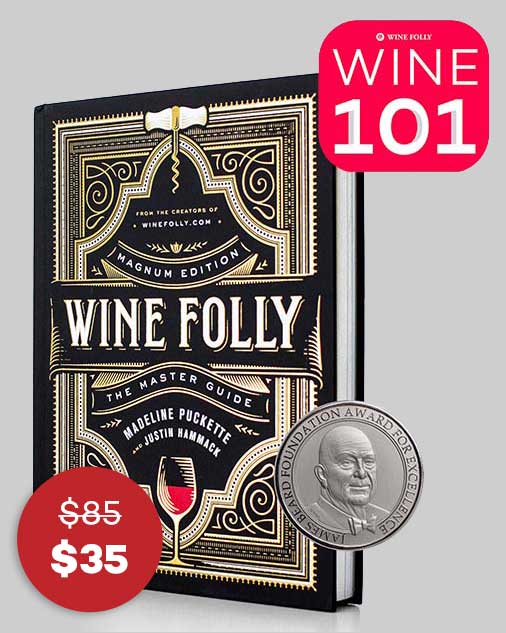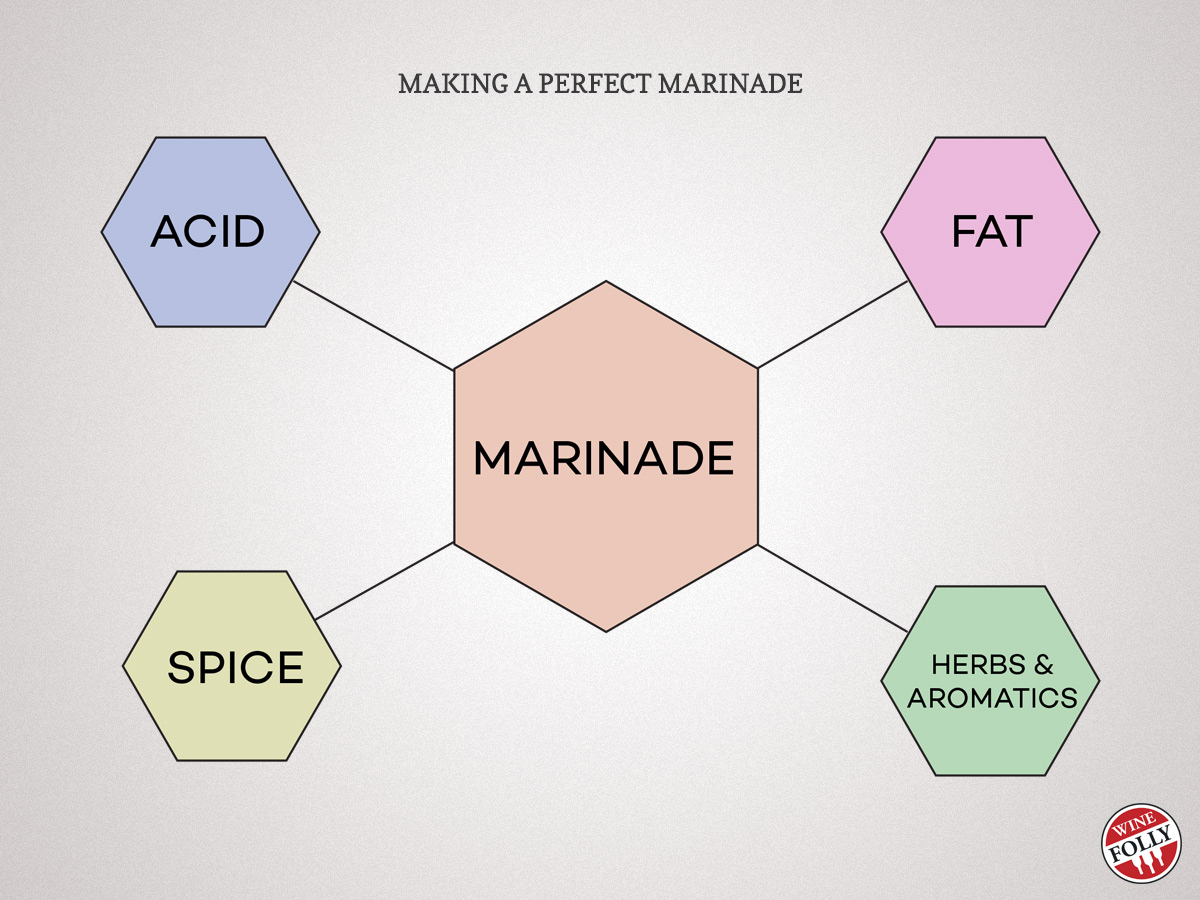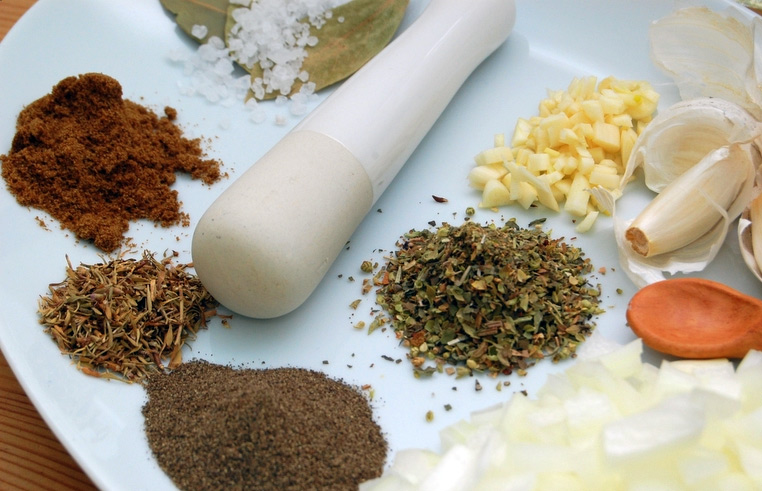How to Marinate Beef in Wine
Wine marinades are a concoction of wine, acidity, herbs, spices and oil that brings amazing flavor to recipes. Whether you need a red wine marinade for steak or a white wine marinade for chicken, this guide will give you the secrets to create delicious and easy marinade recipes.
Here's what this article will show you:
- What the basic components of a marinade are
- Ingredients for your recipe arsenal
- How to assemble your perfect marinade
- The process: how to marinate steak, poultry and salmon
- Try it out: Tri Tip Marinade with Zinfandel and Rosemary
Guide to Awesome White and Red Wine Marinade

What's in a marinade?
A marinade is a concoction of acid, oil, herb and spice. It's designed to impart flavor and tenderize meat. There are an endless list of possible combinations that can be the difference between a dry cafeteria hunk of meat and a delectable, succulent world-class dining experience.
Acid vs Enzyme Marinades
Some marinades call for fruit juices such as papaya and pineapple that contain enzymes. These enzymes are the same compounds found in commercial tenderizers. There are two conflicting schools of thought: detractors of enzymes believe that they tenderize too quickly, not leaving enough time to impart flavor. This guide focuses on wine as a base.
Ingredients for Your Recipe Arsenal


Buy the book, get a course.
Get the Wine 101 Course ($50 value) FREE with the purchase of Wine Folly: Magnum Edition.
Buy Now
THE ACID
Vinegar, acidic fruit juices (like lemon), or wine are the acidic components in the marinade that tenderize meats. They also play an important part in imparting flavor. An example of a high acid wine is Champagne or a zesty white wine, a wine with less acidity includes Malbec, Carignan and oaked Chardonnay.
TIP: Use low or no-acid marinades when marinating overnight. Go with a low acid wine. Too much time on acid can turn the meat from tender to mushy.
Don't know what wine to choose? Here is a great resource on Picking a Cooking Wine
THE FAT
Beyond the staple EVOO (extra virgin olive oil) and butter, there many other kinds of oils to consider such as sesame oil, peanut oil, grapeseed oil, etc. Each type of oil has a different flavor and smoke point which is something you'll want to consider.
HERBS & AROMATICS
The left brain of your aromatic designs, your herbs and aromatic vegetables will impart the floral, vegetal, earthy and even fruity characteristics into your meat.
TIP: "Zest" is the shaved skin of an orange, lemon or lime peel. An excellent way to impart these flavors is to take a carrot peeler to the outside of a clean piece of one of these fruits.
THE SPICE
The yin to your herbal yang, spices add heat, baking aromas and enhance umami flavors. Salt and pepper will always be your base, but there are many other choices to throw into the mix.
TIP: Many components in spices such as capsaicin in pepper and vanillin in vanilla are more soluble in fat or alcohol than in water. Since meat is up to 75% water, using oils and alcohol in your marinades helps to better dissolve the spices and integrate them into the meat.
How do you choose the right ingredients?
This is where the art of composing a marinade comes in. The identity of your dish will come from a combination of the elements you choose, and (most importantly) the meat/product is the center of it all.
CONSIDER THE DISH: Step back and consider the meat as it fits in with the entire meal. Also, consider the wine you'd like to pair with the dish. Just like with wine and food pairing, pairing ingredients in a recipe comes down to complementing and balancing flavors. Start with our recommendations, then branch out and experiment on your own!
Read more about the Science of Flavor Pairing
How to Assemble Your Marinade

How much do I need?
- ACID: ½– 1 cup wine
- FAT: ¼ – ½ cup oil
- HERBS: ½ teaspoon – 2 tablespoons (for intensity)
- SPICE: ½ teaspoon – 2 tablespoons of salt
[facebook align="right"][/facebook]
Your acid plus your oil should be enough to immerse the meat easily in a zip locked container.It depends on how big the hunk of meat is, but usually you want the final result to equal about 1 cup, with half as much oil as acid. So a good measure would be ½ cup to 1 cup of wine and ¼ to ½ cup oil.
If you are planning on adding vinegar, lemon juice or Worcestershire sauce as well, you will only need ¼ of a cup. With something more pungent like Dijon mustard or overly-sweet like honey, then only 2 tablespoons are required.
TIP: If you want concentrated flavors, your vinegars, Worcestershire sauce and mustards are the way to go. Wine provides the perfect base flavor and tenderizer, but you don't have to stop there.
For dried herbs and spices you'll need about ½ teaspoon, but up to 2 teaspoons if you want the herb to stand out. This also varies based on how pungent the herbs are, so always taste first and measure second. For fresh herbs, some are less pungent and may require up to ¼ cup.
If you want to add some strips of zest or cloves of garlic, about 3 of each will suffice.
Lastly, if you need to increase volume to completely submerge your meat, add it in the wine.

How to Marinate Steak, Poultry and Fish (like Salmon)
Time to get your meat ready.
If you are dealing with a one inch or less thick cut of meat, it will be good to go as is. Otherwise, perforate the surface of the meat at 1-2 inch intervals to ensure the marinade can penetrate and impart flavors throughout.
| Meat | Time |
|---|---|
| Brisket, Roast or Flank (beef) | Overnight |
| Rack of Lamb | Overnight |
| Whole Chicken | 4+ hours |
| Steak (beef) | 2-4 hours |
| Pork Chops, Lamb Chops | 2-4 hours |
| Eggplant and Mushrooms | 2-3 hours |
| Chicken Breast, Thigh or Legs | 2+ hours |
| Tofu (extra-firm style) | 1-2 hours |
| Stew (beef) | 1-2 hours |
| Salmon Steak (or other fish) | 30 minutes |
| Salmon Filets (or other fish) | 15 minutes |
| Shellfish (lobster, crab etc) | 5-10 minutes |
MIX IT
Wisk your acid, oil, dry herbs and spices in a non-reactive bowl (ceramic, glass or stainless steel) until the components are well integrated and the salt is fully dissolved. Add the fresh herbs last, gently integrating them.
BAG IT & TAG IT
Place your meat and marinade in an airtight zip lock bag or container and remove all the air you can. Mark the container with the time and date and store in the refrigerator to marinate.
TIP: Thoroughly clean and sterilize containers before reuse! I err on the side of caution and throw out zip lock bags after use with raw meat.
REST & FIRE
Remove the meat from the refrigerator and allow the temperature to approach room temperature. Fire it up and enjoy! Whatever your method of preparation, the meat should now be thoroughly tenderized and well-flavored.
Here are a few "do's" and "don'ts" to keep in mind:
- DO bake, roast or sauté the dish in the marinade
- DO use the marinade as the base for a sauce after it has been cooked.
- DO NOT reuse marinade
- DO NOT let the meat sit out for more than 20 minutes to approach room temperature.
- DO NOT use marinade as a sauce raw unless you bring it to a full boil (food safety is key!)
Tri-Tip Marinade Recipe
Here is a perfectly paired wine marinade for tri-tip that takes into consideration the complexity of flavor that Zinfandel adds as a wine marinade.
Zinfandel Rosemary Marinade for Tri-Tip
- 4-6 pound tri-tip
- 1 cup Zinfandel
- 1⁄2 cup olive oil
- 3 cloves garlic
- 6 sprigs fresh rosemary
- 1⁄4 cup chopped basil leaves
- 2 teaspoons salt
- 1 teaspoon ground pepper
- Marinate overnight
Sources
main image of pork chops by Travis Forsyth
Marinade spices by my amii
Mr. Curtis on G+
andersonequitiardead.blogspot.com
Source: https://winefolly.com/wine-pairing/white-and-red-wine-marinades-guide/